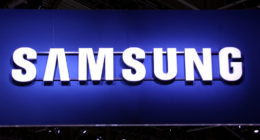Microsoft Edge is following pursuit to Google Chrome and taking another step closer to killing Flash from its browser offering. Redmond is planning to make the complete switch to HTML5-powered content by blocking support for the trusty old (or vulnerable!?) Flash by default. This change, which will hand over more control to users, will be introduced with the upcoming Windows 10 Creators Update.
In a blog post detailing the same, Microsoft says that it is focused on making the browsing experience more secure by switching to HTML5 and not loading Flash content — even in the background. Instead, Edge browser will present users with a new ‘click-to-run’ dialog box that prompts them to choose whether they want to load Flash on the said webpage or not. This strategy has been employed by other browsers — Chrome, Firefox, and Opera as well.
Talking about this decision, Crispin Cowan from Microsoft’s Edge team says,
Sites that support HTML5 will default to a clean HTML5 experience. In these cases, Flash will not even be loaded, improving performance, battery life, and security. For sites that still depend on Flash, users will have the opportunity to decide whether they want Flash to load and run, and this preference can be remembered for subsequent visits.
While the internet is slowly moving closer to the impending demise of Flash, Microsoft — very much like others — is also taking baby steps to phase out the said technologies existence from the web. Previously, with the Anniversary Update, Edge had started blocking Flash content that wasn’t central to the web page. But now, the popular websites which rely solely on Flash to provide the required experience to visitors wouldn’t be affected by this change right away.
The Microsoft Edge teams have already started working on the transition process and a preview of this feature will be rolled out to Windows Insiders in the upcoming preview builds. The final stable version of the release will accompany the next big update arriving in early 2017. It will also closely monitor Flash content consumption in Microsoft Edge and then work on further shortening the list of websites exempted from this change. The primary goal of this service will, however, ultimately remain to hand over more control to users.






